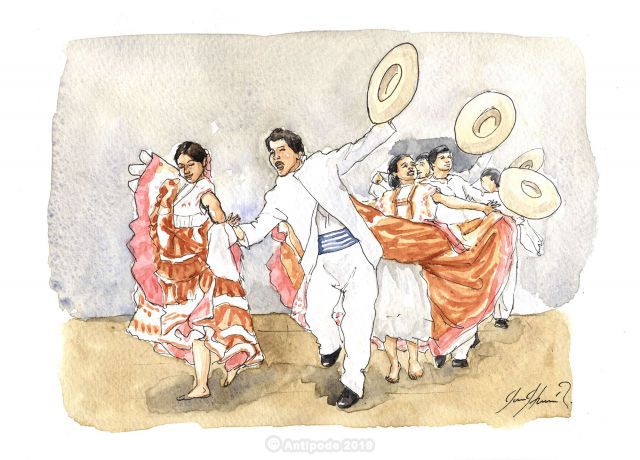

Dance in Peru
Because there are a wide variety of music coexisting in Peru, there also are a wide variety of dance. It’s possible to see it throughout the year, but especially during carnivals (Puno’s carnival in March) o special celebrations (Inti Raymi in Cusco at the end of June).
On the coast, Afro dances, with the typical zapateo (to kick the floor with the feet) and the vals peruano, are both classical expressions of influences from Africa and European immigrants. The clearest vestige of colonial heritage is the marinera, where women are wearing large dresses, like Spanish flamenco, and wave white tissues in a very elegant manner. It’s a seduction dance where they never touch. This dance has become the national symbol of Peruvian identity.
In the Andes, a variety of dances originating in different influences could be mentioned: pre-Hispanic dances, colonizers derision, with religious and catholic nature, seduction dance…At least, we have to mention the danza de las Tijeras, the scissors dance, which takes its name from a strange instrument with which dancers do many pirouettes. The Diablada dance is characteristic of the Aymara’s Region of Puno and Titicaca Lake: imported from Bolivia, this dance represents fight between good and evil. Finally, like the music we referred earlier, the huayno dance is THE ultimate Andean dance and it’s danced in every social meeting and celebration in the sierra.



